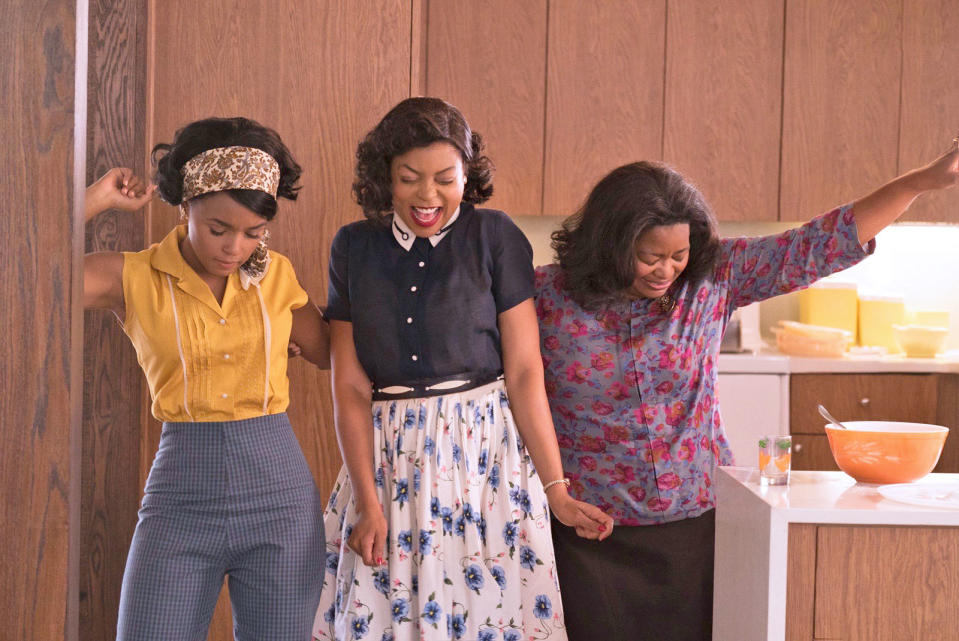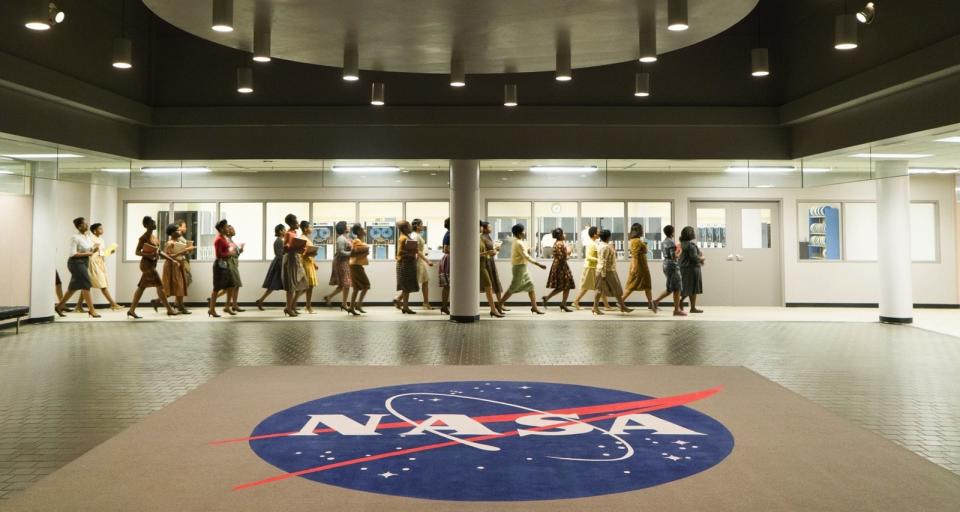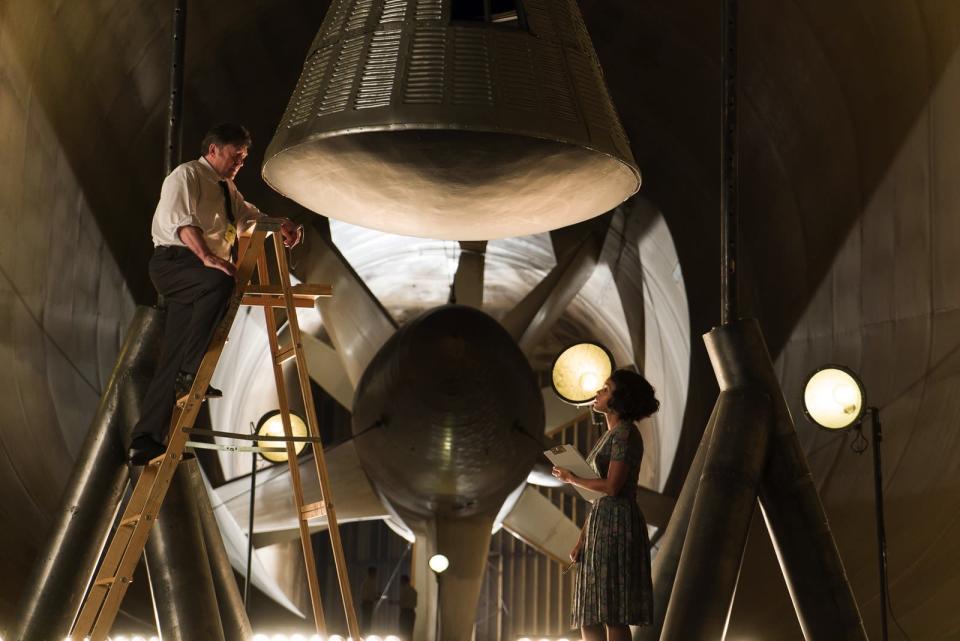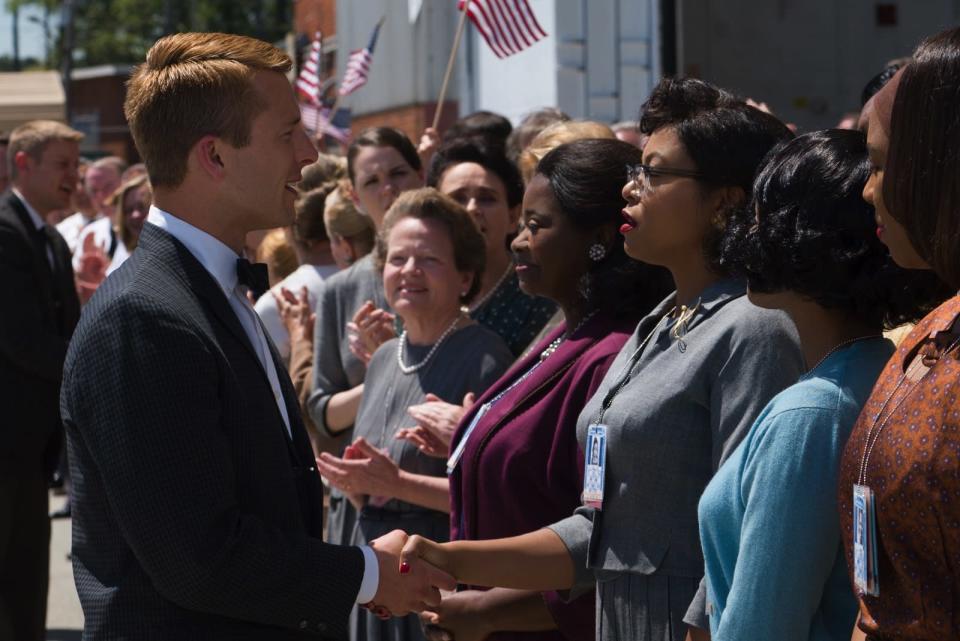Engadget has been testing and reviewing consumer tech since 2004. Our stories may include affiliate links; if you buy something through a link, we may earn a commission. Read more about how we evaluate products.
'Hidden Figures' is the uplifting NASA story we need right now
It's a much-needed reminder that black women were crucial to the early space program.

Tales of the space race between the US and Russia inevitably focus on the white male scientists and astronauts who seemingly did the impossible. But it's important to remember that those folks had plenty of support from people of all backgrounds. Hidden Figures, which hits theaters in a limited release on Christmas, is the rare opportunity to tell one such story: how three black women helped NASA launch the first American into orbit.
Based on the book of the same name by Margot Lee Shetterly, Hidden Figures is particularly timely as NASA is coming off of successful missions like the New Horizons Pluto excursion. The agency has finally found a groove on social media and it's also beginning to talk about exciting missions ahead, like bringing humans to Mars. And of course, Hidden Figures is also incredibly relevant as we approach the presidency of Donald Trump, a man who's proven to be resolutely anti-science when it comes to things like climate change.
Set in the lead-up to the Mercury-Atlas 6 mission in 1962, the film focuses on Katherine Johnson (played by Taraji P. Henson), a math genius who played a crucial role in calculating flight trajectories for NASA; Dorothy Vaughan (Octavia Spencer), who led black women at the West Area Computers division; and Mary Jackson (Janelle Monáe), NASA's first African-American female engineer. They're also supported by a coterie of other black women who served as "human computers" -- people making complex mathematical calculations before the advent of traditional computers. (Annie Easley, another human computer at NASA, also had a lasting impact on modern spaceflight.)
From the start, Hidden Figures doesn't waste any time proving why we should care about these women. Katherine Johnson is portrayed as a child prodigy who makes her way through college by the age of 18 with degrees in Mathematics and French. In an early scene, as the three women are dealing with a broken down car by the side of the road, they catch the attention of a white male police officer who has no problem wielding his authority over them with disrespect. But after learning they work at NASA, he offers them an escort to their offices, which leads to a striking image of the women speeding after his police car to keep up. That's not something you usually expect to see in a film set in the early 1960s.
NASA (and its previous incarnation, NACA, the National Advisory Committee for Aeronautics) counts itself as one of the pioneers for diverse employment during the civil rights era in the US, but that doesn't mean there weren't any hurdles for black employees. The West Area Computers Division in Langley, Virginia, where the three subjects of Hidden Figures initially worked, was completely segregated by race. And, as you'd expect during that time, they also had to live with things like segregated bathrooms and dining areas.

Hidden Figures confronts those equality issues head on. Once Johnson moves away from the human computer pool and gets assigned to the Space Task Group, she's forced to deal with a room full of mostly white men who offer her little respect. There's a hush when she pours herself a cup of coffee for the first time, and eventually someone sets up a ratty secondary machine to serve as the "colored" coffee maker. When she needs to use the bathroom, she's forced to run all the way across the NASA campus to use the colored facilities by the West Area group. And she works with a colleague, played by Big Bang Theory's Jim Parsons, who pays her little respect. Naturally, Johnson's boss, a fictional NASA manager portrayed by Kevin Costner, is clueless about all of the issues she's facing.
Things aren't much better for the other women, either. Dorothy Vaughan gets rebuked from her white supervisor (played by Kirsten Dunst) when she asks for official manager status, even though she's doing the work of a manager. When Mary Jackson wants to be promoted to an engineer, she's forced to petition the city to let her take night classes at a segregated high school.

These are all issues we've seen before, but as we move further away from the indignities of Jim Crow laws and the struggle for civil rights, its easy to underestimate their impact. It also isn't difficult to trace a line between the problems presented in Hidden Figures and diversity issues we're still dealing with today. For example, Dunst's character seems to mean well as a supervisor. And yet, she still blocks any attempt at advancement. (I also found it interesting that she addresses Vaughan as "Dorothy," while subordinate calls her much younger supervisor "Ms. Mitchell.") It's the sort of casual discrimination that people of color still have to deal with today.
At the Space Task Group, Katherine Johnson argued to attend high-level meetings about the Mercury-Atlas 6 mission -- something no woman attended before -- so that she could have the most current data for her orbital calculations. She plotted the trajectory for Alan Shepard, the first American to reach space, in 1959, though we don't see that in the film. Instead, Hidden Figures focuses on her calculations for John Glenn's mission aboard the Friendship 7 spacecraft in 1962, which made him the first American to orbit the Earth. While NASA was moving away from human computers and towards IBM machines by then, Glenn famously asked for Johnson to double-check the machine's figures before he took off.

Speaking of IBM, we also see how Dorothy Vaughan was wise enough to start learning FORTRAN as soon as NASA received the machines. She encouraged her group at the West Computing Area to learn programming skills as well, which made them invaluable as NASA started relying more on IBM's equipment. Vaughan would eventually go on to become NASA's first African-American manager, all the while helping other black women at the space agency.
Hidden Figures has some issues you'd find in many biopics. At times it's a bit too sentimental, and it glosses over historical moments quickly. But it's ultimately an important film, one that brings to light just how much NASA -- and really, America as a whole -- owes this group of black women. It's a reminder that, even during a more tumultuous racial climate, we were able to overcome our differences to work towards a common (and seemingly) impossible goal. And as the world is getting increasingly more divisive, that's worth remembering.
